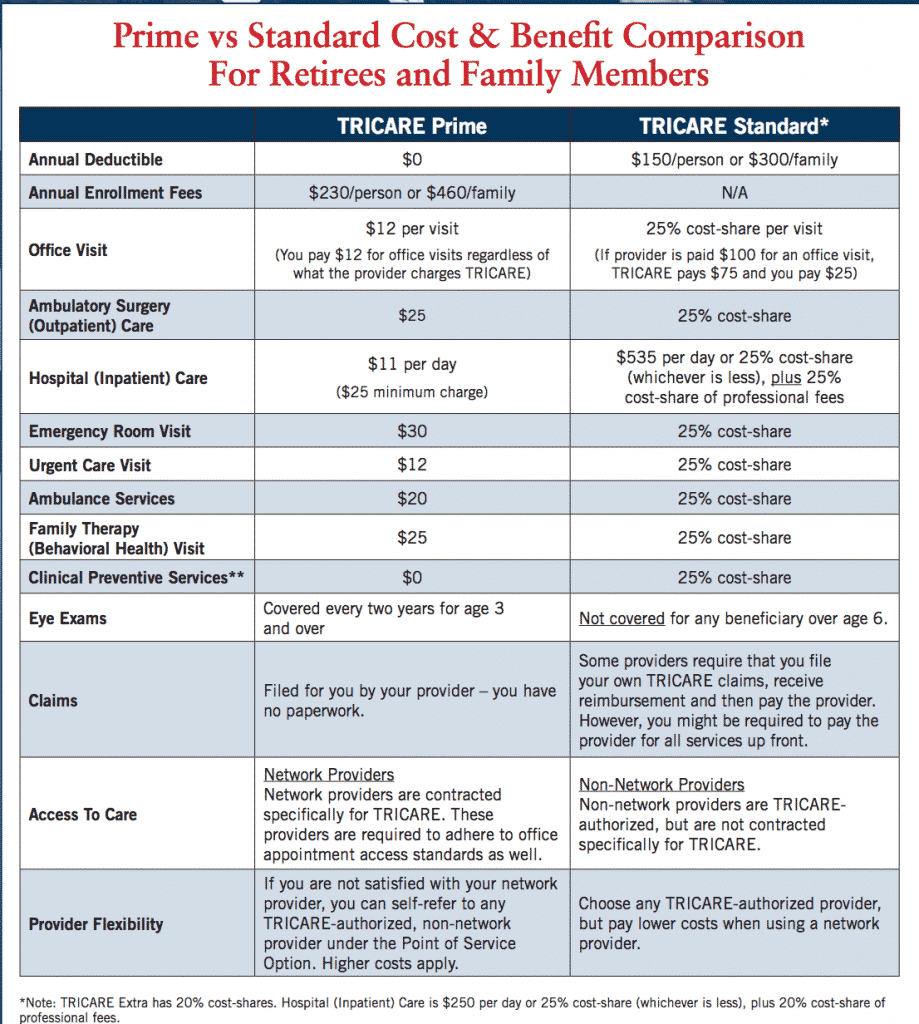We are writing this article to help answer questions we receive on a weekly basis. Most of our clients want/need to see military patients, both retired and active duty, but only a handful of these clients actually understand the difference between becoming certified and actually being contracted. So we’re going to answer the most frequently asked questions here.
Credentialing Services, Tricare Prime or Standard?
This is a commonly asked question and it’s impossible to offer a one-size-fits-all answer to this question. As a rule, if you are located near a military base, I would lean towards being contracted with Tricare Prime. Most active duty patients will obtain Tricare Prime for their insurance so without a contract in place with Tricare, it’s unlikely that you’ll see any of these patients. If you do, you’ll need to make sure an obtain an authorization as you will not be paid by Tricare Prime without one.
Here is a simple way to view the two options when considering which is best for your practice:
Tricare Prime= HMO which means payment is a little lower and authorization is required. There are more patients but these patients have more restrictions as to who they can see, and there are more hurdles for you to jump through in order to see them. They have an assigned PCP and as a specialist, you’ll need an authorization in order to see the patient.
Tricare Standard= PPO which means that patients under Tricare Standard have more flexibility as to who they can see. If you’re a certified provider, you can see Tricare Standard patients without an authorization. If you’re not certified, the patient can still schedule an appointment with you but they will pay you out-of-pocket and will be responsible for submitting the claim to Tricare.
What is the difference in reimbursement between Tricare Standard and Tricare Prime?
This is a great question and one that every practice needing credentialing services should ask prior to contracting. As a rule, you will be paid 5-15% less when contracted with Tricare Prime. This is because the United States Military contracts with companies like Humana and United to manage their networks and handle claims administration. These contracts are worth billions of dollars and part of the objective behind them is to keep costs down. The argument from Humana (as an example) would be that by participating and agreeing to the discount, you are now opening your door to thousands of new patients in your area.
With Tricare Standard (aka Tricare certified/authorized), you are paid more for each visit but won’t even show up as an option for the Tricare Prime members. If you’re not eager for new patients, I would stay away from getting contracted with Tricare Prime. If you’re in a competitive market and could use a boost in new patients, I would strongly consider becoming contracted with Tricare Prime.
What is percentage of Medicare is Tricare Prime and Standard?
Tricare Standard is paid at 90% of the CMAC fee schedule(see blog post below) with the remaining 10% being the responsibility of the patient. This means that you should be collecting 100% of the CMAC fee schedule. The CMAC fee schedule is essentially a blended form of the Medicare fee schedule. It is typically a little higher than the current year Medicare fee schedule.
Tricare Prime is paid based on your contracted rate. In competitive markets, you could be paid as low as 70% of CMAC and with the average contract being around 85% of CMAC. It may seem like a discount worth taking because of number of patients you’ll be eligible to see but you must remember the additional work required on the administrative side. You MUST obtain an authorization or you won’t be paid a penny. On the flip side, depending on your specialist and market, you can actually be contracted above the CMAC fee schedule. We’ve negotiated contracts over the years that pay 10-30% over the Tricare fee schedule. This only tends to happen when there is not a VA hospital nearby or when your group is the only option within a certain specialty. If you’re part of a large group or a specialist in an underserved area, it would be worth spending some time negotiating with your Tricare administrator before agreeing to their terms.
What is the difference in patient responsibility for Tricare Prime and Standard?
This is another commonly asked question and one best answered by consulting the below picture. Patient responsibility is really contingent upon what type of service the patient is receiving and where this service is being rendered (hospital, surgery center, office, etc.). When preparing to see a Tricare member, whether Prime or Standard, it’s important to verify eligibility and determine how much of the patient’s deductible still needs to be met.

CMAC Fee Schedule Tool
t is not unusual for us to be asked 3-4 times per week about fees.... [Read more]
Read MoreWhy Contracting is Still Critical When Starting a Practice
When advising clients, we strive to put ourselves in their shoes as we believe that.... [Read more]
Read MoreJun




